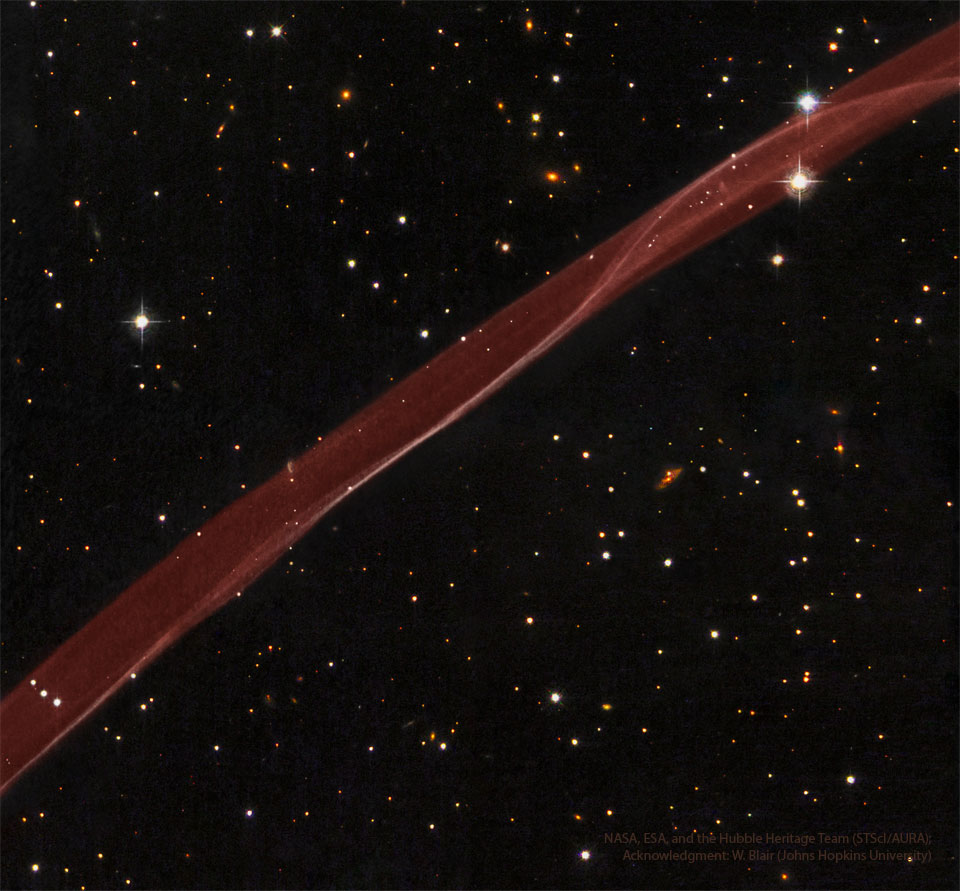2023年8月6日
SN 1006: A Supernova Ribbon from Hubble
Credit: NASA, ESA, Hubble Heritage (STScI/AURA); Acknowledgement: W. Blair et al. (JHU)
Explanation: What created this unusual space ribbon? The answer: one of the most violent explosions ever witnessed by ancient humans. Back in the year 1006 AD, light reached Earth from a stellar explosion in the constellation of the Wolf (Lupus), creating a “guest star” in the sky that appeared brighter than Venus and lasted for over two years. The supernova, now cataloged at SN 1006, occurred about 7,000 light years away and has left a large remnant that continues to expand and fade today. Pictured here is a small part of that expanding supernova remnant dominated by a thin and outwardly moving shock front that heats and ionizes surrounding ambient gas. The supernova remnant SN 1006 now has a diameter of nearly 60 light years.
Tomorrow’s picture: pelican stars
SN 1006: 哈勃的超新星缎带
影像提供: NASA, ESA, Hubble Heritage (STScI/AURA); 志谢: W. Blair et al. (JHU)
说明: 是什么造就了这条不寻常的太空缎带?答案是:人类曾目睹的最剧烈爆炸之一。在西元1006年,豺狼座一例恒星爆炸所产的光传达地球,并在天空中产生了一颗比金星还亮、可见期长达2年多的 “客星”。这颗如今编录号为SN 1006、发生在7,000光年远处的超新星,留下了一个至今仍持续在扩张和变暗的庞大遗骸。上图所呈现的,是这颗仍在扩张的超新星遗迹之一小部分,其中最醒目的,是震波不停的加热及电离周围气体,所产生的纤薄向外传播的震波前沿。超新星遗迹SN 1006目前的直经将近有60光年。
明日的图片: pelican stars



